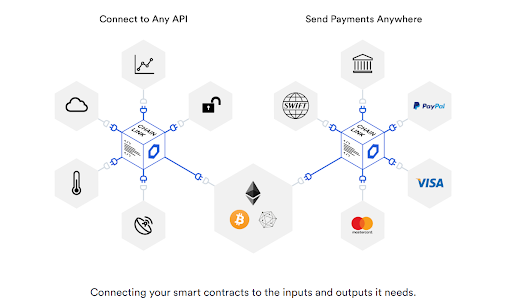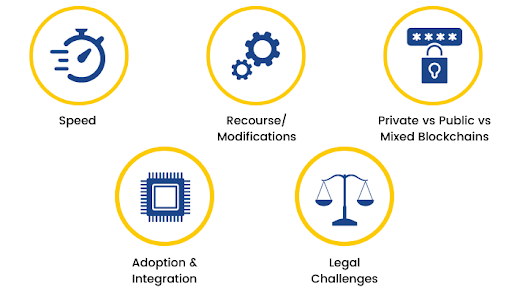Companies are transitioning from the blockchain learning phase to the development of blockchain-based platforms to take advantage of technology for businesses. While the financial sector continues to be the leader in block-chain adoption, more and more industries are capitalizing on this innovation. 84% of companies explore and embrace technology extensively. Determine if your company needs a decentralized application. Work on a block-chain-based software development guide.
Despite widespread enthusiasm, not all organizations are implementing block-chain-related projects. PwC found that out of 600 companies surveyed, 20% explore the technology, 32% develop Apps and only 15% use them in their business.
Others do not succeed after the launch and suspend block-chain projects. To avoid this unfortunate statistic, the steps in developing block-chain software must be carefully thought out before launching a project. Thus, the application solves business issues instead of creating new ones.
Let’s look at what defines the development of a block-chain application.
Corporate blockchain type
Block-chain software development is carried out in the same way as for standard applications, but with some peculiarities. The way the IT team constructs the work largely depends on the type of blockchain under development:
- Public blockchain.

It is a type of distributed network that anyone can join on equal terms. Nobody controls the adherence to the block-chain, and transactions are confirmed by a vote of over 51% of users.
- Consortium.
A subspecies of block-chains with public authorization. It is a network where one or more organizations permit a certain number of readers and writers. The former extends the block-chain by adding the condition to the database. The latter participate in the creation of the transaction. The consortium is required for enterprises where it is important to store sensitive information.
- Private blockchain.
Only trusted individuals working within the organization have access to this blockchain network. Authorisation and accessibility are controlled by the firm.
You might also like: What is better to invest in: BTC or ETH?
4 indications that businesses need blockchain
Block-chain enables organizations to securely store data and transactions, trust partners and monitor commercial transactions. Can you adapt these block-chain capabilities to your business? To know this, you must take a decision:
- Does the firm need to centralize data storage?
Block-chain is a means to store data in a distributed database. If an organization wants to protect assets from attack and ensure equitable and fair exchange of information on the network, it needs blockchain.
- How many members are involved in the business?
Big business involves the interaction of a large number of partners. For example, the supply chain includes manufacturers, suppliers, transporters, middlemen, customers, banks, freight forwarders and others. It is useful to move the network of partners to block-chain in order to allow a quick exchange of information.
- Do partners trust each other?
Let’s continue with the example of logistics. How do we ensure that all members of the network work in good faith? Are they going to ship quality goods without falsifying product quantity data? When there are many parties involved in the business who do not trust each other, it is worth considering developing a block-chain software.
- How often do the transaction rules change?

Experts from Andersen say the rules of the blockchain are automatically executed within the smart contract. They program the conditions for data interchange or execution of a transaction. Smart deals automate manual transactions, minimizing errors. If the nature of the business is such that trading rules change frequently, blockchain will need to be discontinued.
To summarize, blockchain is relevant for companies in which:
- partners have to use the same database;
- reliability of information is important for the party;
- participants do not trust each other;
- companions want to dispose of intermediaries and act directly..
You might also like: The Future of Stellar: Predictions and Expectations
When implementing blockchain, it is also worth considering the speed of transactions and regulatory laws. Bitcoin processes about 5 transactions per second, while IBM’s Hyperledger Fabric processes up to 20,000.
Not all industries have elaborate rules for blockchain. In some cases, its principles contradict existing regulations. For example, the technology violates GDPR Article 17 on the “Right to erasure”. It implies that the owner of the data has the right to withdraw consent to its use, and the organization is obliged to delete it. By default, the information in the blockchain is unchanged and cannot be erased. That creates additional challenges for the implementation of technology within the European Union.

Choice of blockchain development platform
Once a company has decided how it will use blockchain, it needs to determine how to develop the software. There are two options:
- Build your own platform from scratch.
This method is chosen by companies that want to bring their own cryptocurrency to market. The business controls every function of the platform and adapts the structure to its needs.
- Build software based on a ready-made platform.

In this option, developers use the open source and functionality of the underlying platforms (Ethereum, Hyperledger Fabric, R3 Corda or Quorum). When choosing an off-the-shelf framework, it is recommended to settle on the one that is easier to adapt to the use of blockchain in your organization.
Blockchain software development
After defining the basics, it is worth developing a trial version of a blockchain application – a minimum viable product. MVP will allow you to test the idea in the marketplace and see if it is worth pursuing blockchain development. Of course, the idea behind the network must be viable and sustainable.
You might also like: The Benefits of Building DApps on Cartesi
MVP will show whether the blockchain provides enough value for users. It will help gather feedback on the application to adjust further development and create a product that best meets users’ requirements.
The development team will continue to improve the blockchain application until it creates a relevant product that works and generates business value.
Blockchain deployment in production
A Gartner study found that only 14% of enterprise blockchain projects will launch in 2020, compared to 9% in 2019. A number of measures are necessary for successful implementation and smooth operation of a decentralized application:
- Analyze the blockchain, user feedback on the app and suggest improvements.
- Project managers, developers, and stakeholders need to work closely together to improve the product from a business perspective.
- Prepare a detailed scaling plan: from investments to advertising and legal issues.
- Continuously develop and maintain the product: improve functions, update legal documentation, and so on.
Conclusion
Before engaging in blockchain-based software development, it is worth evaluating the business case for it. Most organizations do not understand how this technology works, resulting in overstated expectations and failed projects. A comprehensive cost-benefit analysis is a key step in achieving innovation success.

